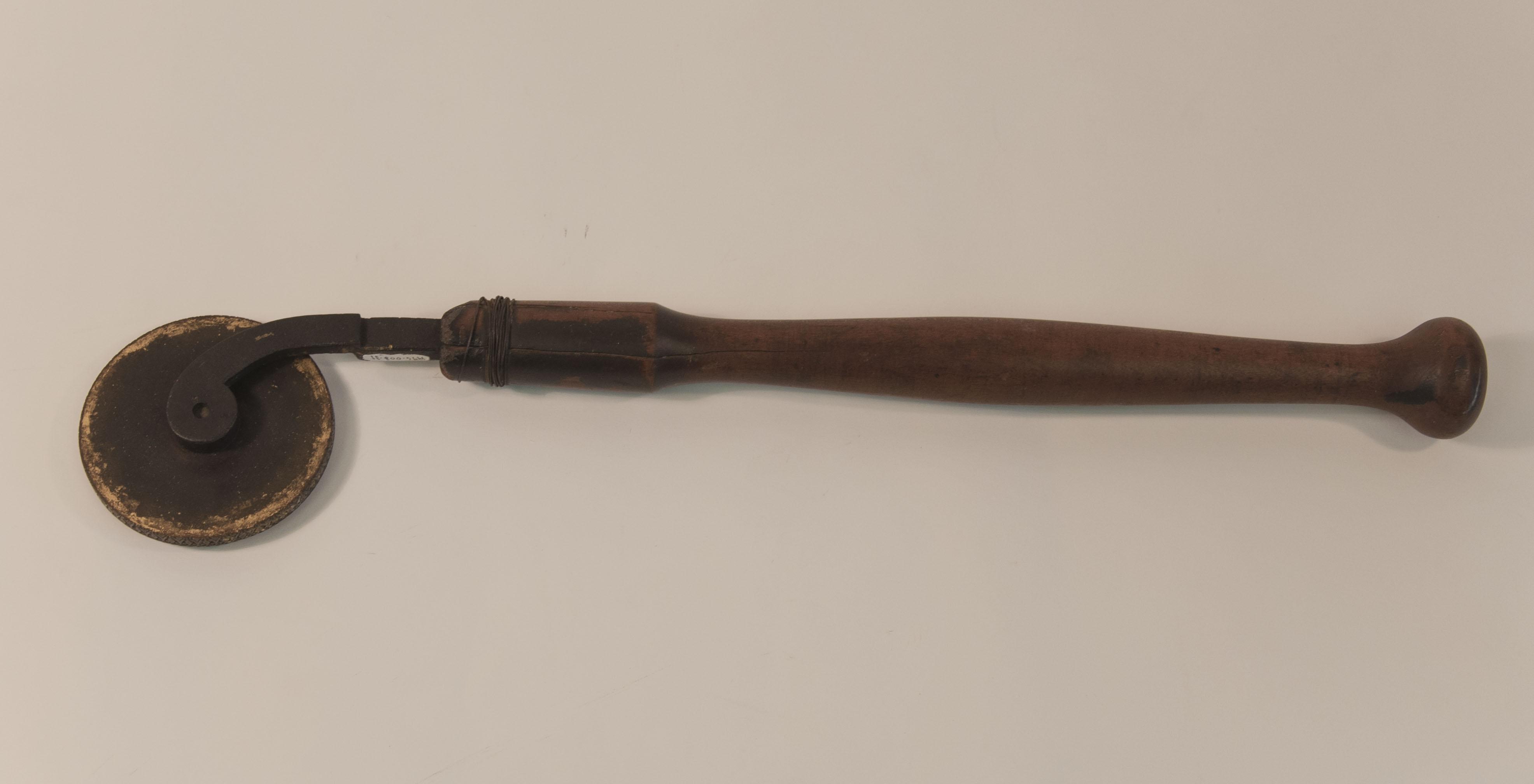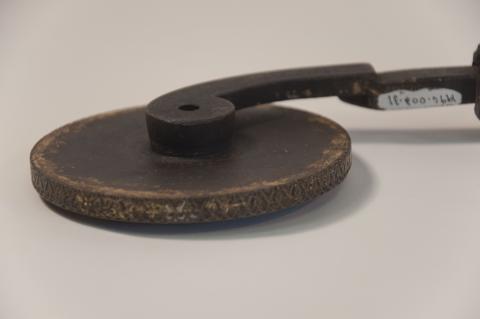Book Binding Leather Roll
October 1, 2019
This month’s feature is a bookbinding leather roll tool. It is numbered in the Museum’s Collection as #1996.002.31. This tool was used in a process called ‘gold-tooling’, where gold leaf would be applied to the cover of a book. The process used an adhesive called ‘glair’ that would be smeared onto the surface of the leather, followed by the gold leaf. The gold was then coated in grease in order to hold it in place. Above an open flame the bookbinder would then carefully place the brass portions of the roll in order to heat it up. Brass was used along the wheel because it evenly distributes heat. Once the wheel was hot, the end of the handle was placed against the shoulder in order to press the device firmly across the leather. When the craftsman had finished a revolution of the wheel, the tool would be lifted and the remaining engraving from the wheel would be the embedded design on top of the leather. Any leftover gold leaf was then collected and stored away for use at a later time.
Gold tooling is considered one of the most important innovations within bookmaking. It was first practiced within 13th century Iran for decorations on Qurans and eventually made its way to Venice. From Venice the technique caught on rapidly throughout Europe and became one of the most sought after decorations for books. Up until Arts and Crafts Movement in the 19th century when craft makers began to exercise moderation, nearly every surface of the book’s cover would be coated in gold leaf. Gold-tooling is still practiced today in ‘fine binding’, but is now combined with some outlay and inlay work in order to stretch the gold further.
We hope that you enjoyed this peek at our collection! We'll be back next month with another artifact. Have a great October!
Category: Tools
Region of Origin: Indian/Middle Eastern
Keywords:
Tools


